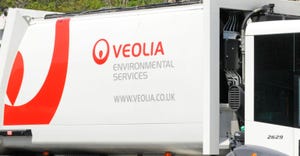Plight at the Museum
Popular Connecticut garbage museum in danger of closing.

The Garbage Museum in Stratford, Conn., has a simple goal. “The museum's mission is to teach people how to take care of their environment by recycling and by thinking before they throw something in the trash,” says Paul Nonnenmacher, director of public affairs for the Connecticut Resources Recovery Authority (CRRA), which owns and operates the attraction.
The Garbage Museum is part of the CRRA's regional recycling processing center. A skybox in the museum overlooks the entire material recovery facility. On one side, visitors can check out activity on the tipping floor. The other side overlooks all of the facility's processing lines. “So from that one spot, you can see exactly what happens to your recyclables after they're taken away from the curb,” says Nonnenmacher, adding “I think there are a number of people who are still surprised that the stuff that they leave out for recycling actually is being recycled, that it is being sorted and processed and baled and sent to manufacturers.”
Other attractions include a giant, simulated walk-in compost pile featuring interactive composting and vermiculture demonstrations (“with real worms,” notes Nonnenmacher); “Trash Bash” trivia, in which incorrect answers to waste-themed questions get contestants doused with trash; an aluminum can model illustrating the pollution prevented by recycling; and a gallery of recycled art. Even the museum's carpet is made of recycled PET.
But the most popular attraction, says Nonnenmacher, is Trash-o-saurus, a one-ton, 24-foot-long dinosaur sculpted entirely of garbage. The beast represents the average amount of trash each Connecticut resident produces in a year.
The museum provides an invaluable service to the school groups, families, and other visitors. But it is in trouble. The collapse of recyclable markets has hit the CRRA facility hard. As it stands, the museum could close as early as this summer.
Some help came a few months ago when the museum was granted tax-exempt status by the IRS. To raise money, it is selling recycled glass tiles for a dinosaur mural and is asking for public donations through its Web site, www.crra.org.
“In the last couple of months, a grassroots movement has sprung up to try to help us keep the museum going,” says Nonnenmacher. A nearby Daisy troop is holding a yard sale fundraiser for the museum. A local radio station is running a public service campaign. And a New York ad agency donated a radio spot. But things still look dicey.
“We're finding that we do have a lot of friends, and we're hoping that with their help, we can attract some larger donors to help keep us going,” says Nonnenmacher. “Because as far as teaching people about recycling in Connecticut, we're it. There's still a need, because we still need to do a better job of recycling.”
Related Stories
About the Author(s)
You May Also Like


